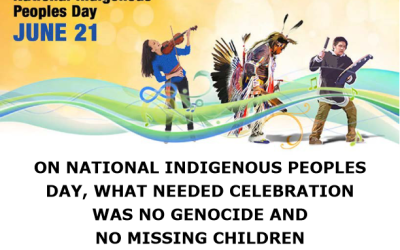Memorial University President Vianne Timmons is only the latest “Pretendian” to be exposed as a non-indigenous person claiming to be indigenous. There is a growing list of such people, including Mary Turpel-Lafond, Carrie Bourassa and Joseph Boyden. What all of these people have in common is that they are accused of falsely claiming indigenous ancestry to leverage financial benefits and career advancement.
But what all of these people also have in common is that none of them needed special help in the first place.
Timmons salary, for example, was $450,000 per year. These are all privileged, successful people. The purpose of affirmative action policies that give priority to indigenous people is supposed to be to lift marginalized people — the huge indigenous underclass — up the socio-economic ladder.
None of these privileged people needed a lift. That is the true scam here. It is not that clever people will take advantage of government programs that give out free benefits. That will happen all the time, everywhere. The scam is rewarding university professors and other well paid folk, while pretending to help the poor and marginalized.
Governments help the privileged indigenous people (or those pretending to be indigenous) play this game. But every one of us is complicit. Through our tax dollars we allow our elected representatives to fund outrageous schemes that give special benefits to well paid academics, bureaucrats, writers, and others (many of whom don’t appear to be very indigenous at all) while the real poor and marginalized indigenous people remain stuck on the bottom rung of that ladder.
Because, how does hiring a university president or professor who claims an indigenous identity to get a high-paying sinecure help one of those people who is stuck on that bottom rung? It doesn’t. It simply lets politicians and others pretend that they are doing something to help indigenous people.
They are not. Instead, these programs simply encourage suspiciously non-indigenous-looking people to demand even more special benefits for themselves, while diverting the money from those at the bottom, who actually need the help. Hiring people with inferior qualifications based only on their race also sends the message that people of that racial or ethnic group are not able to compete with others. This is a very harmful message to send, and reeks of racism.
The fact is that those at the bottom don’t need special programs that might help them become university presidents, because such lofty positions will never be within their reach. What they need is economic opportunity, and a realistic chance of succeeding in a community where economic opportunity actually exists. Most indigenous communities don’t offer that economic opportunity.
Some First Nations communities are well managed, and do offer good economic opportunities for their residents. But most are not, and do not. Many are far away from job centres, and will never have the ability to generate the jobs and careers that all of their young people need.
These uneconomic communities are not “nations” in any real sense. No matter how many tax dollars are dumped into them, they will remain permanently poor, largely dysfunctional human warehouses inhabited mainly by dependent people, who will pass on that hopeless future to their children. The unskilled young people who live in those communities deserve the opportunity to move to job centres, and to be integrated into the modern economy. They can do this without sacrificing their Indigenous identity.
More programs must be initiated that give ambitious young people from those communities the opportunity to move, and to give them the education, skills training and interim support they need to succeed. There is nothing dishonourable about beginning one’s work life with an entry level job. Those hands-on jobs help develop discipline and work skills.
And there is nothing wrong with moving to where the jobs are. The chiefs must give that message to their people, instead of demanding money for yet more backward-looking UNDRIP-type boondoggles.
To achieve success, it might be necessary to find ways of moving entire families — or even entire communities — who ask for the help, to such centres. The chiefs of uneconomic communities need to support these programs, and stop pretending that their poor reserves can provide all of the good jobs and careers their young people deserve.
Most importantly, the government should ensure that none of the money needed for these programs is siphoned off by privileged, middle class opportunists.
In the meantime, who is or is not hired as a university president, and whether or not their great grandfather was part-indigenous, has nothing to do with any of this. Government programs that allow charlatans to claim special privileges, based on a claim to some distant indigenous ancestor, are just as fraudulent as the professors and other grifters claiming those special benefits. In fact, government programs giving special benefits to any indigenous person who has already integrated into the modern economy are useless, and take away from the real help that those folks stuck at the bottom need to get unstuck.
The sad fact is that the huge indigenous underclass hasn’t budged since 2015, despite the massive increase in indigenous spending since then. Those people need jobs, not more indigenous professors, more special powers, or yet more griping about perceived “historical injustices”.
And the true Pretendians are the privileged people — indigenous or not — who vacuum up multi-millions of tax dollars, while that underclass remains firmly stuck in place.
Brian Giesbrecht is a retired judge and senior fellow at Frontier Centre for Public Policy
Originally published here.



